Throughout history – whether through war and conquest or through migration of peoples or through other myriad events – cultures have mixed, and when mixing, they influence subsequent developments in the arts. Last week, while I was preparing this Hungarian embroidery pattern for publishing, I found myself thinking of the various influences on embroidery design, and in particular, I contemplated the Ottoman influence on Hungarian design. (Incidentally, Mike mentioned the Turkish influence on Hungarian embroidery in the comment section on the aforementioned Hungarian embroidery pattern published earlier this week).
There is something about this design of Lilly’s that struck me as particularly Byzantine-ish, and this thought led me to looking for examples of Turkish embroidery and designs online, which in turn led me to some good design resources. Today, I’ll share those resources with you and point out some things that struck me as similar between Hungarian and Turkish designs.
First, let’s start with part of Lilly’s design:
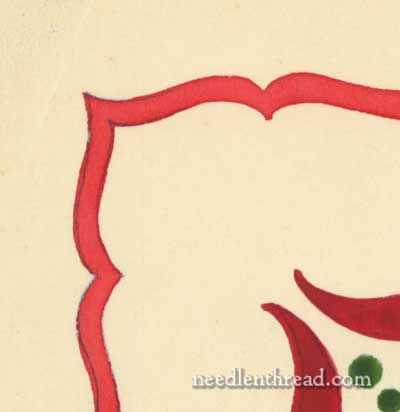
The outline of Lilly’s design is what first struck me. It is rather typical of arabesque designs, with it’s mosque-like peaks and valleys. In fact, the whole design, while not geometric (though quite symmetric) has an arabesque look to it.
Here’s a snippet of a Turkish embroidery design that has a similar edge:
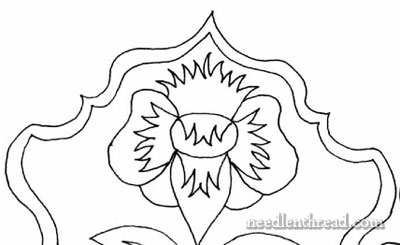
The other clue that got me thinking of the Ottoman influence on Hungarian design is the central “flower” element on each side of the design:
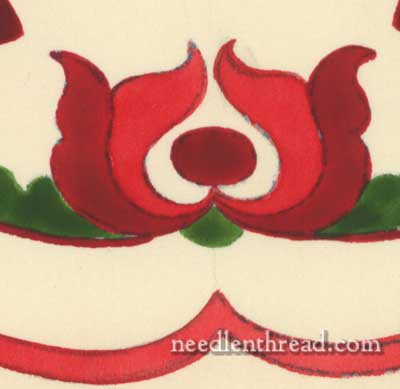
It is no wonder that there is a definite Ottoman influence in Hungarian art and design. From as early as the 1400’s through the beginning of the 18th century, parts of Hungary were occupied by the Turks, in one way or another. For about 150 years (from the early 1500s through the late 1600’s), the Kingdom of Hungary was entirely under Turkish occupation. The sharing of design elements back and forth between each culture would be inevitable under such circumstances.
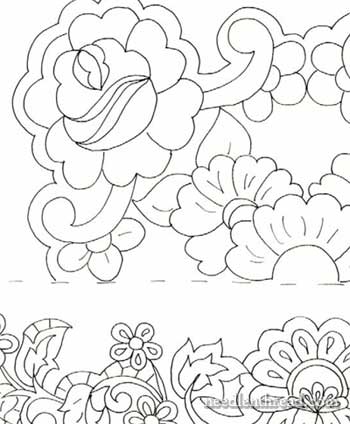
But it goes both ways. When looking through the same collection of Turkish embroidery designs, it was not surprising to see elements and patterns that would look perfectly natural in a catalog of Hungarian embroidery patterns, too.
This is one facet of needlework that I find absolutely absorbing: the combination of cultural influences in the various styles of embroidery. If I had the time to spend on deep research, I think it would be fascinating to study the various needlework designs and techniques from two areas: Eastern Europe and around the Mediterranean basin, following the threads of history that connect the various influences found in regional embroidery.
The partial designs above are all taken from four books of embroidery designs available on the ISMEK.org website. While exploring the Hungarian – Turkish connection, I came across ISMEK, which is a vocational training institution in Turkey. Their website features many arts, crafts, and vocational publications in PDF format that can be downloaded. The four embroidery design books are full of line drawings that would translate well into all kinds of needlework techniques. Here are the direct links to the books, so that you don’t have to sift through too much on the website to find them: Design Book 1, Design Book 2, Design Book 3, and Design Book 4. They’re all PDFs, so you can either download directly to your computer, or choose “save as” and rename them when saving them.
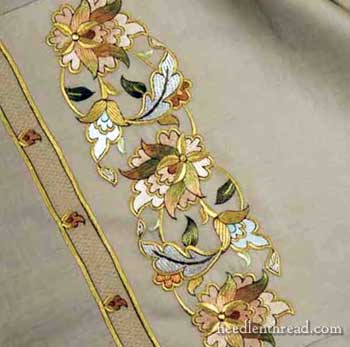
Of course, I couldn’t restrict myself to just the embroidery designs while wandering through the publications available on the ISMEK website … and I ended up browsing through some other books that have a plethora of artistic content. For example, there’s this “Prestige Catalog” (PDF) which features all kinds of made items, including some hand embroidered decorative items for the home that are really quite beautiful. It’s worth a browse for inspiration alone!
(Another “incidentally” – this must’ve been the week for thinking of Turkish embroidery! This past Monday, Hannah published links to the very same Turkish embroidery resources on her blog enbrouderie. My post today was actually written last Saturday, so I thought it rather serendipitous that we both had Turkish embroidery on the brain, leading us to this resource. Hannah also posted a couple other interesting links, plus a “Turkish-esque” design she is currently stitching, so do check them out!)


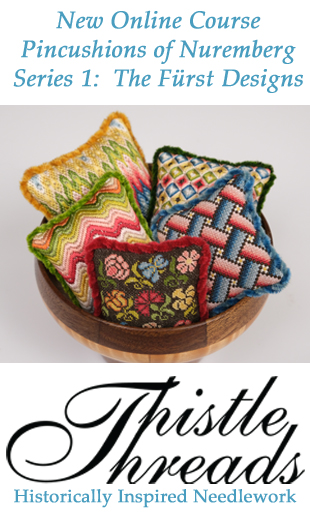
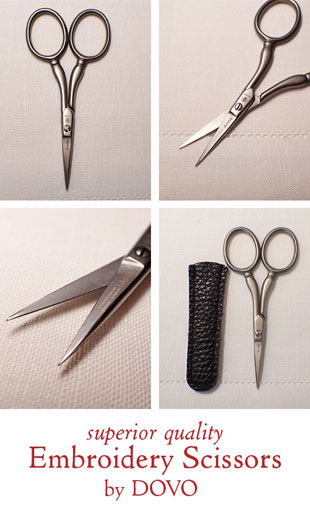
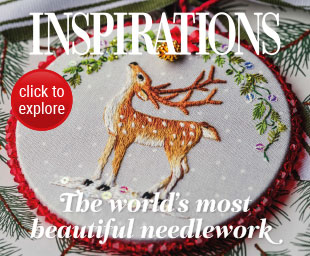


Once again Thank you so much for such precious links Mary!
Needlework and the mixing of culture is an endless searching! And always amazing!
Though I couldn’t enter ISMEK website I’ll try later.
Thanks again for sharing with us all you search findings
Mary – please elaborate more on the stitches and threads in the beautiful design with gold, while, greens, russets, etc, and the fabric – breathtaking….
Hi, Ginger – the publication with that picture in it is linked to right there in the same paragraph. I think it’s a publication of items that are made and sold in Turkey. (Whoa! I didn’t make it!!!) It is beautiful, isn’t it?? ~MC
Wow! You and Hannah are most certainly on the same wavelength! I checked out that site its great. I looked at Book #5 and only got thru the paintings still need to go back and look at all the other sections which each feature a different handcraft. Thanks again for all that you do!
Such wonderful post Mary!
The Ismek books are an awesome find, thank you for sharing them.
The gold-work you are picturing is so gorgeous.
I love the corner design on the cover of the 4th book, but they are all so beautiful and most definitely there is a connection between the Hungarian and Turkish motifs.
150 years is a long time … and even our language have traces of Turkish words.
Even though those 150 years were not remembered fondly, the historical legacy they left is to be treasured and are all enjoyed today.
This brings to mind Jane Nicholas’ latest stumpwork/goldwork book with the terrific Turkish tile designs. Thanks so much for the links to these lovely designs!
Hi, Jeanine – Me, Too! The designs are quite reminiscent of Jane Nicholas’s book. There are so many in there that can be translated to all kinds of embroidery techniques! All the various tulips especially remind me of Jane’s book…. as Suzanna said, so many ideas – so little time! ~MC
Nope …. The corner design I really like is on the LAST page of Book 4.
Just so I don’t cause any confusion.
Anyway, looking through these beautiful designs I know I am in trouble !!!
Too many ideas and not enough time … any of you feel this way ? 🙂
Uh, Suzanna – I’m trying to figure out when I DON’T feel that way! I’m with you! ~MC
Ok, looks like this is my posting day …
Mary, you sure stirred up my interest with your last two blog subjects 🙂
Looking at Lilly’s design above, I can see it in my minds eye how pretty it would look stitched up like your spring design with the two tone color groups.
It would not at all be “traditional”, maybe not even the colors, but I think it would look quite pretty and Spring like.
Maybe I can make it a go-to project and when I’m finished I’ll share it on the blog.
Ummmm … not promising but will try ….
By the way … is anyone else having trouble to open the Design Book 3 link?
I have tried it several times to no avail …
Mary, I can’t express my thanks for this connection! The designs are utterly exquisite, graceful, charming, true to nature. Words fail me. What a kind project for these books to be made available to the public.!
For a wonderfully creative and beautiful design, check out page 190 in design book #4.
There is something about these designs that stamp them as “Turkish” but I don’t know what it is. I think it has something to do with the gracefully flowing lines and the uncluttered feel to even the most complex of them. Lovely.
I am searching for a design to embroider, not too large, but with one of those wonderful curving borders as in your project.
I am so impressed by all the absolutely beautiful designs on your pins. Thank you for sharing your very lovely and wonderful culture. My culture & heritage is from Mexico and the embroidery on the folkloric dresses & blouses from Mexico is so vibrant in colors & designs. I hope you will look at the BEAUTIFUL culture of my Mexican Heritage.
I like your design and if I had the skills to get the design from you I would, but I don’t . I have all thr embroidery skills needed, but lack the. Computer skills.